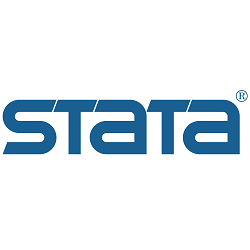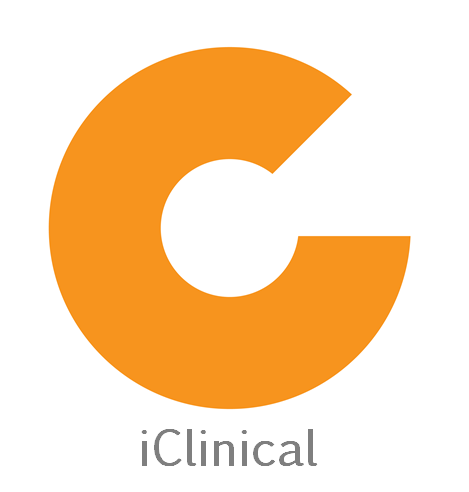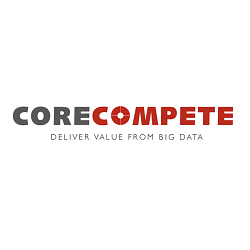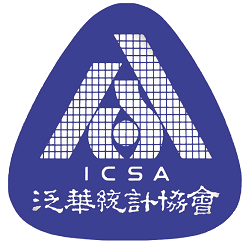
'Learning-by-doing' -- By registering for CIMPOD’s case-study driven interactive workshops, attendees will be given the opportunity to learn 4 different causal inference techniques over the course of the 2-day conference. Instructors will utilize real-world examples to demonstrate how these powerful methods can be implemented and utilized effectively in various research settings. CIMPOD 2017 is a unique opportunity for research and patient stakeholders to learn cutting-edge and practical causal methods from a roster of internationally recognized experts.
Learning Objectives
If you want to understand how causal inference methods should be selected and applied in practice, the CIMPOD 2017 workshops are for you. The workshop learning format will illustrate causal methods through the use of detailed case-studies (derived from highly regarded real-world research), software implementation examples (covering SAS, Stata, and R analytics packages), and general “tips & tricks” that researchers can use to overcome the most common challenges faced when applying the methods to individual CER questions and databases.
These workshops are most appropriate for researchers in industry, academia, and government agencies. Participants should have:
Participants should bring their own laptop computer with a functional copy of a statistical analysis package as indicated by your workshop instructor. Participants who don't have Stata could take advantage of StataCorp’s free 30-day trial offer.


Questions can be sent to Yi Zhang at yz@mtppi.org
.Meet our speakers
PharmD, DrPH
OPTUM
John Seeger is a Pharmacoepidemiologist and Chief Scientific Officer at Optum Epidemiology. He is an Adjunct Assistant Professor in Epidemiology at Harvard.
Research Scientist
Harvard T.H. Chan School of Public Health
Kunjal Patel is a Research Scientist at Harvard T.H. Chan School of Public Health.
Associate Professor of Biostatistics
Johns Hopkins Bloomberg School of Public Health
Michael Rosenblum is an Associate Professor of Biostatistics at Johns Hopkins Bloomberg School of Public Health.
.
Assistant Professor in Biostatistics
London School of Hygiene and Tropical Medicine
Rhian Daniel is an Assistant Professor of Biostatistics at the London School of Hygiene and Tropical Medicine.
Principal Statistician
Takeda Pharmaceuticals U.S.A., Inc
Lauren Cain is a Principal Statistician at Takeda Pharmaceuticals and a Visiting Scientist at Harvard T.H. Chan School of Public Health
Assistant Professor
Erasmus Medical Center, NL
Sonja Swanson is an Assistant Professor in the Department of Epidemiology at Erasmus Medical Center, NL.
.
Assistant Professor
Harvard Medical School
Dr. Jessica Young is an Assistant Professor and Biostatistician in the Department of Population Medicine at the Harvard Medical School and the Harvard Pilgrim Health Care Institute.
Associate Professor
Harvard Medical School
Dr. Sherri Rose is an Associate Professor in the Department of Health Care Policy at Harvard Medical School.
Professor
Harvard T.H. Chan School of Public Health
Miguel Hernán is Professor of Department of Epidemiology and Department of Biostatistics at the Harvard School of Public Health (HSPH).
Executive Director of Econometrics
STATA
David M. Drukker is the Executive Director of Econometrics at Stata.
Director, Health Informatics,
IBM Research
Dr. Michal Rosen-Zvi is the Director, Health Informatics at IBM Research.
Associate Director, CER Methods & Infrastructure
PCORI
Jason Gerson is the Associate Director, CER Methods & Infrastructur at PCORI.
Case Studies • Hands-on Experience • Nuts and Bolts
Yi Zhang
MTPPI
(Slides)
Jason Gerson
PCORI
(Slides)
John Seeger
Optum
Case Study: A Propensity Score-Matched Cohort Study of the Effect of Statins, Mainly Fluvastatin, on the Occurrence of Acute Myocardial Infarction (Pubmed Link) (Slides) (Workshop Materials)
Abstract: This workshop on propensity scores is built around a comparative effectiveness question involving statins. Referring to the research involved in the following reference (Am J Cardiol 2003;92:1447–1451), this workshop will aim to provide attendees with propensity score tools that can be applied to a wide range of causal questions. The research question will be discussed and translated into analytic approaches, and the propensity score tool will be applied to draw an answer to the research question from an observational data source. Both background and dataset with SAS programs will be provided.
Kunjal Patel
Harvard T.H Chan School of Public Health
Case Study: Long-term effectiveness of highly active antiretroviral therapy on the survival of children and adolescents with HIV infection: a 10-year follow-up study(Pubmed Link) (Slides) (Workshop Materials)
Abstract: This workshop will briefly introduce inverse probability weighting (IPW) as a method to appropriately adjust for confounding and selection bias by time-varying covariates affected by prior exposure. The primary focus of the workshop will be on presenting applications of this method in clinical research. Two case studies will be presented: one evaluating the effect of combination antiretroviral therapy on mortality among perinatally HIV-infected youth, and the other evaluating the effect of in-utero exposure to atazanavir on neurodevelopment among perinatally exposed, but uninfected infants. Guided exercises using SAS will be conducted to help participants learn how to construct and apply IPW.
Michael Rosenblum
John Hopkins
Case Study:The risk of virologic failure decreases with duration of HIV suppression, at greater than 50% adherence to antiretroviral therapy(Pubmed Link) (Slides) (Workshop Materials)
Abstract: We will give two demonstrations of targeted maximum likelihood estimation. The first demonstration involves a cohort study of marginally housed HIV infected adults in San Francisco, where we estimate the causal effect of adherence to antiretroviral therapy. The second involves a randomized trial of a new surgical treatment for stroke, where we adjust for prognostic baseline variables to improve precision and deal with informative censoring of the outcome. We will explain the double robustness property and demonstrate software implementing a targeted maximum likelihood estimator (which is double robust).
Sonja Swanson
Erasmus University Medical Center in Rotterdam, NL
Case Study:Bounding the per-protocol effect in randomized trials: an application to colorectal cancer screening. (Pubmed Link) (Slides) (Workshop Materials)
Abstract: This workshop will introduce instrumental variable (IV) methods, a set of methods that can potentially estimate causal effects even when confounding is unmeasured. Two case studies will be presented. The first will demonstrate an IV analysis to adjust for non-compliance in a randomized trial; the second will demonstrate an IV analysis to adjust for (measured and unmeasured) confounding in an observational study. In both settings, we will discuss the strengths and limitations of IV approaches, and apply tools for evaluating the validity and robustness of IV effect estimate
Lauren Cain
Takeda Pharmaceuticals U.S.A., Inc
Topic: When to switch antiretroviral therapy
Case Study 1: When to start treatment? A systematic approach to the comparison of dynamic regimes using observational data. (Pubmed Link)
Case Study 2: When to initiate combined antiretroviral therapy to reduce mortality and AIDS-defining illness in HIV-infected persons in developed countries: an observational study. (Pubmed Link) (Slides) (Workshop Materials)
Abtract: This workshop will extend the tools learned in the “Constructing Inverse Probability Weights for Static Interventions” workshop to dynamic interventions . Dynamic interventions are treatment strategies that depend on the evolution of one or more time-dependent covariates. They are regularly used in clinical practice, but rarely compared in clinical research. Two case studies comparing dynamic strategies for the care of HIV-infected individuals will be presented. The first focuses on the initiation of antiretroviral therapy, the other on the monitoring of biomarkers. Guided exercises using SAS will give participants hands-on experience building and implementing IPW for dynamic strategies.
Rhian Daniel
London School of Hygiene and Tropical Medicine
Case Study: Causal Mediation Analysis with Multiple Mediators (Pubmed Link) (Slides) (Workshop Materials)
Abstract: Upon finding an important socio-economic disparity in breast cancer survival, we may wish to investigate how much of this disparity is via choice of treatment. This is an example of mediation analysis.
Traditionally, such a question was addressed informally and only by fitting a series of simple linear regression models. But thanks to the recent prolific contributions of VanderWeele, Vansteelandt and others, the statistical toolbox for such analyses has been hugely expanded, and the theoretical underpinning formalised.
In these workshops we will introduce the counterfactual-based approach to mediation analysis, focusing on two case studies, in alcohol-related cardiovascular disease and breast cancer.
Jessica Young
Harvard Medical School
Case Study: Changes in fish consumption in midlife and the risk of coronary heart disease in men and women(Pubmed Link) (Slides) (Workshop Materials)
Abstract: In this workshop, we will learn about the parametric g-formula, an approach to estimating the effects of time-varying treatment effects using observational data with complex time-varying confounding. We will review the motivation behind the approach and the mechanics of the procedure, along with its practical advantages and disadvantages. We will then review how to use the GFORMULA SAS macro to implement this procedure in practice. We will walk through two examples with simulated data motivated by published applications of this method. For the applied part of the workshop, attendees should have working knowledge of SAS and, preferably, the SAS macro language. Attendees can review the documentation for the SAS macro prior to attending the workshop. This may be accessed at https://www.hsph.harvard.edu/causal/software/.
Sherri Rose
Harvard Medical School
Case Study: Mortality risk score prediction in an elderly population using machine learning (Pubmed Link) (Slides) (Workshop Materials)
Abstract: Machine learning methods are most commonly used for prediction research questions, but can also be central in causal inference methods. These sessions will focus on understanding ensembled machine learning using the SuperLearner R package. This framework allows investigators to run multiple algorithms (eliminating the need to guess beforehand which single algorithm might perform best in a given data) with the opportunity to outperform any single algorithm by additionally considering all weighted averages of algorithms. The workshop will also describe how to incorporate the super learner within targeted maximum likelihood estimation for causal effects in the tmle R package.
David Drukker
STATA
Abstract: This talk reviews treatment-effect estimation with observational data and discusses Stata examples that illustrate syntax and parameter interpretation. After reviewing the potential-outcome framework, the talk discusses estimators for the average treatment effect (ATE) that require exogenous treatment assignment and some estimators that allow for endogenous treatment assignment. The talk also discusses checks for balance, checks for overlap, and some estimators for the ATE from survival-time data. Finally, the talk discusses estimating and interpreting quantile treatment effects.
Yi Zhang
MTPPI
John Seeger
Optum
Case Study: A Propensity Score-Matched Cohort Study of the Effect of Statins, Mainly Fluvastatin, on the Occurrence of Acute Myocardial Infarction (Pubmed Link) (Slides) (Workshop Materials)
Abstract: This workshop on propensity scores is built around a comparative effectiveness question involving statins. Referring to the research involved in the following reference (Am J Cardiol 2003;92:1447–1451), this workshop will aim to provide attendees with propensity score tools that can be applied to a wide range of causal questions. The research question will be discussed and translated into analytic approaches, and the propensity score tool will be applied to draw an answer to the research question from an observational data source. Both background and dataset with SAS programs will be provided.
Kunjal Patel
Harvard T.H Chan School of Public Health
Case Study: Atazanavir exposure in utero and neurodevelopment in infants (Pubmed Link) (Slides) (Workshop Materials)
Abstract: This workshop will briefly introduce inverse probability weighting (IPW) as a method to appropriately adjust for confounding and selection bias by time-varying covariates affected by prior exposure. The primary focus of the workshop will be on presenting applications of this method in clinical research. Two case studies will be presented: one evaluating the effect of combination antiretroviral therapy on mortality among perinatally HIV-infected youth, and the other evaluating the effect of in-utero exposure to atazanavir on neurodevelopment among perinatally exposed, but uninfected infants. Guided exercises using SAS will be conducted to help participants learn how to construct and apply IPW.
Michael Rosenblum
John Hopkins
Case Study:Safety and efficacy of minimally invasive surgery plus alteplase in intracerebral haemorrhage evacuation (MISTIE): a randomised, controlled, open-label, phase 2 trial (Pubmed Link) (Slides) (Workshop Materials)
Abstract: We will give two demonstrations of targeted maximum likelihood estimation. The first demonstration involves a cohort study of marginally housed HIV infected adults in San Francisco, where we estimate the causal effect of adherence to antiretroviral therapy. The second involves a randomized trial of a new surgical treatment for stroke, where we adjust for prognostic baseline variables to improve precision and deal with informative censoring of the outcome. We will explain the double robustness property and demonstrate software implementing a targeted maximum likelihood estimator (which is double robust).
Sonja Swanson
Erasmus University Medical Center in Rotterdam, NL
Case Study: Methodological considerations in assessing the effectiveness of antidepressant medication continuation during pregnancy using administrative data (Pubmed Link) (Slides) (Workshop Materials)
Abstract: This workshop will introduce instrumental variable (IV) methods, a set of methods that can potentially estimate causal effects even when confounding is unmeasured. Two case studies will be presented. The first will demonstrate an IV analysis to adjust for non-compliance in a randomized trial; the second will demonstrate an IV analysis to adjust for (measured and unmeasured) confounding in an observational study. In both settings, we will discuss the strengths and limitations of IV approaches, and apply tools for evaluating the validity and robustness of IV effect estimates.
Dr. Michal Rosen-Zvi
IBM Research
Description:
Abstract: Coming Soon.
Lauren Cain
Takeda Pharmaceuticals U.S.A., Inc
Topic: When to monitor CD4 cell count and HIV-RNA?
Case Study: When to Monitor CD4 Cell Count and HIV RNA to Reduce Mortality and AIDS-Defining Illness in Virologically Suppressed HIV-Positive Persons on Antiretroviral Therapy in High-Income Countries: A Prospective Observational Study.(Pubmed Link) (Slides) (Workshop Materials)
Abstract: This workshop will extend the tools learned in the “Constructing Inverse Probability Weights for Static Interventions” workshop to dynamic interventions . Dynamic interventions are treatment strategies that depend on the evolution of one or more time-dependent covariates. They are regularly used in clinical practice, but rarely compared in clinical research. Two case studies comparing dynamic strategies for the care of HIV-infected individuals will be presented. The first focuses on the initiation of antiretroviral therapy, the other on the monitoring of biomarkers. Guided exercises using SAS will give participants hands-on experience building and implementing IPW for dynamic strategies.
Rhian Daniel
London School of Hygiene and Tropical Medicine
Case Study: How much do tumor stage and treatment explain socioeconomic inequalities in breast cancer survival? Applying causal mediation analysis to population-based data (Pubmed Link) (Slides) (Workshop Materials)
Abstract: Upon finding an important socio-economic disparity in breast cancer survival, we may wish to investigate how much of this disparity is via choice of treatment. This is an example of mediation analysis.
Traditionally, such a question was addressed informally and only by fitting a series of simple linear regression models. But thanks to the recent prolific contributions of VanderWeele, Vansteelandt and others, the statistical toolbox for such analyses has been hugely expanded, and the theoretical underpinning formalised.
In these workshops we will introduce the counterfactual-based approach to mediation analysis, focusing on two case studies, in alcohol-related cardiovascular disease and breast cancer.
Jessica Young
Harvard Medical School
Case Study: Comparative effectiveness of dynamic treatment regimes: an application of the parametric g-formula(Pubmed Link) (Slides) (Workshop Materials)
Abstract: In this workshop, we will learn about the parametric g-formula, an approach to estimating the effects of time-varying treatment effects using observational data with complex time-varying confounding. We will review the motivation behind the approach and the mechanics of the procedure, along with its practical advantages and disadvantages. We will then review how to use the GFORMULA SAS macro to implement this procedure in practice. We will walk through two examples with simulated data motivated by published applications of this method. For the applied part of the workshop, attendees should have working knowledge of SAS and, preferably, the SAS macro language. Attendees can review the documentation for the SAS macro prior to attending the workshop. This may be accessed at https://www.hsph.harvard.edu/causal/software/.
Sherri Rose
Harvard Medical School
Case Study: A Machine Learning Framework for Plan Payment Risk Adjustment (Pubmed Link) (Slides) (Workshop Materials)
Abstract: Machine learning methods are most commonly used for prediction research questions, but can also be central in causal inference methods. These sessions will focus on understanding ensembled machine learning using the SuperLearner R package. This framework allows investigators to run multiple algorithms (eliminating the need to guess beforehand which single algorithm might perform best in a given data) with the opportunity to outperform any single algorithm by additionally considering all weighted averages of algorithms. The workshop will also describe how to incorporate the super learner within targeted maximum likelihood estimation for causal effects in the tmle R package.
Miguel Hernan
Harvard T.H Chan School of Public Health
(Slides)







Click Here to Reserve Hotel Rooms
Free Shuttle service will be provided to and from the conference.